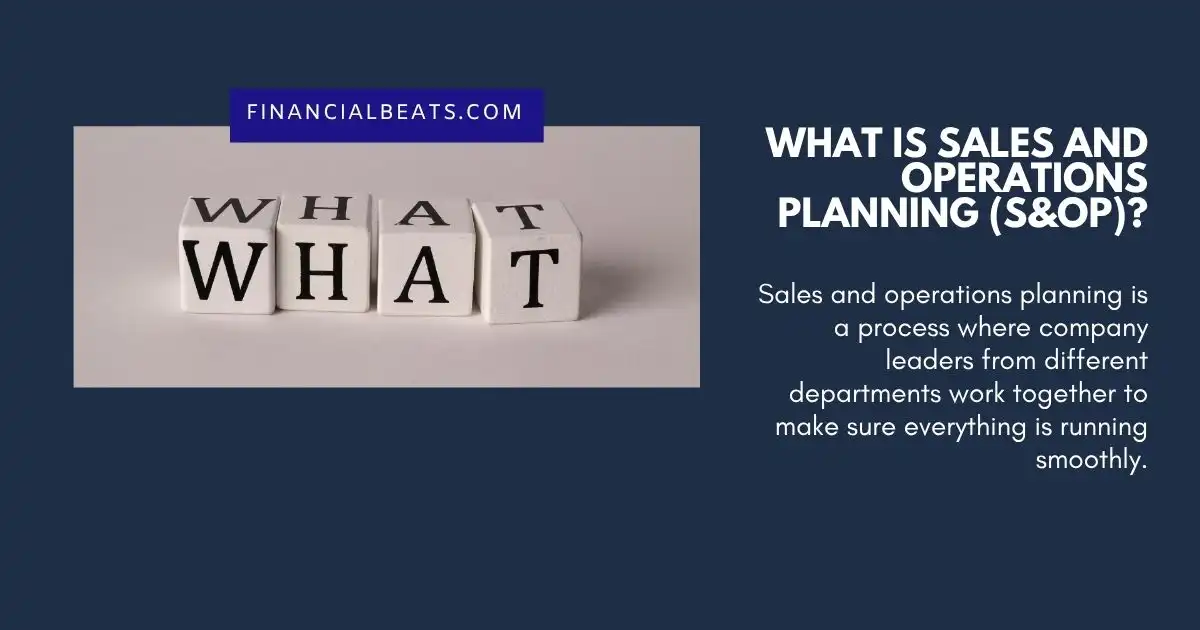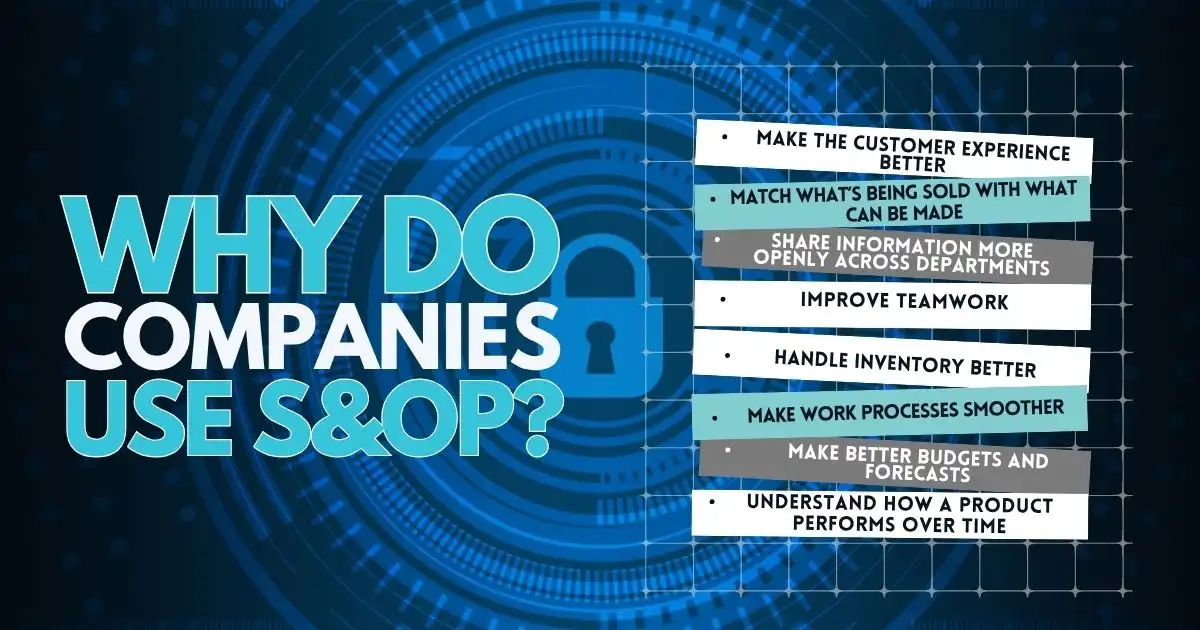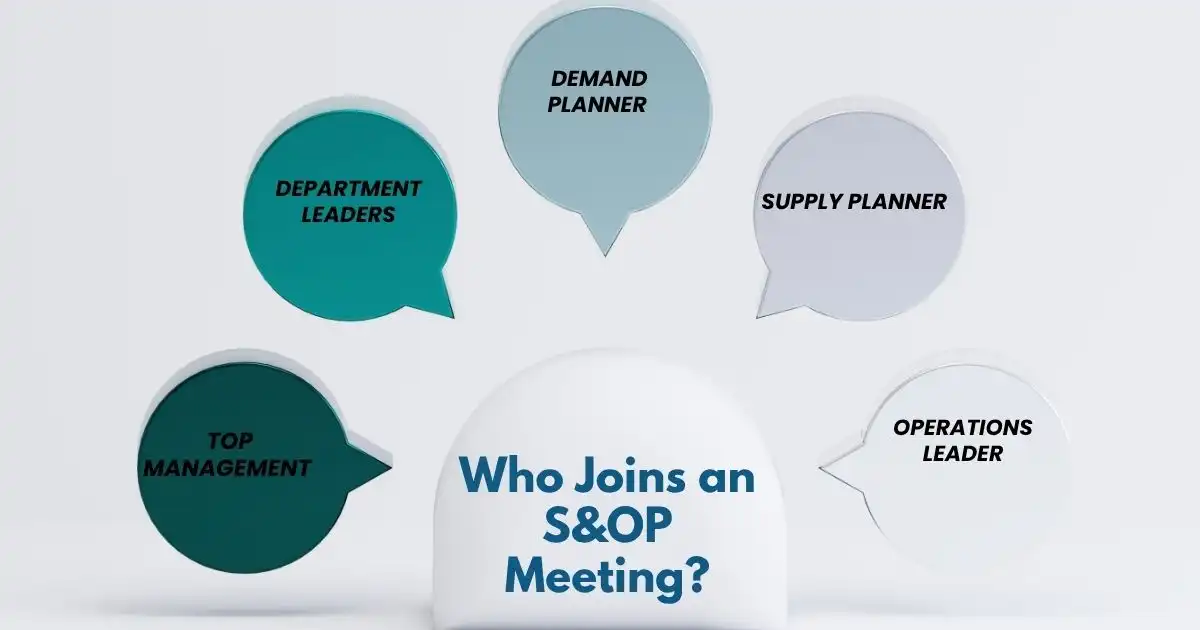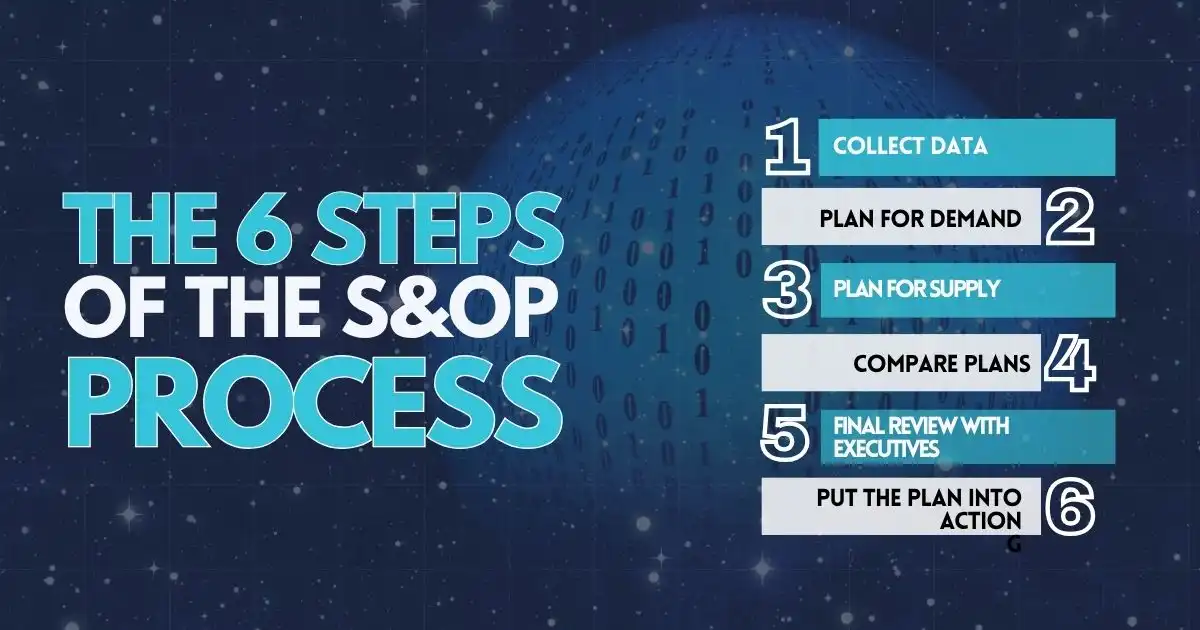Think of your business like a team sport. Every part of the company—sales, operations, and finance—has a specific role to play. But if everyone follows a different playbook, things get messy. Sales and Operations Planning, or S&OP, helps bring those parts together.
S&OP connects customer demand with the company’s production and delivery capabilities. It reduces guesswork, prevents delays, and keeps teams working toward the same goals. When departments share one plan, they make better choices and avoid costly mistakes.
But if your team isn’t aligned, how can you expect to win the game?
What is Sales and Operations Planning (S&OP)?

Sales and operations planning is a process in which company leaders from various departments collaborate to ensure everything runs smoothly.
The goal is to connect the company’s financial plans with how much product is needed and how much can be made. This helps reduce problems like making too much or too little, wasting resources, or disappointing customers.
Many companies struggle because their teams don’t talk or work well together. A 2022 report from Zendesk found that 26% of companies said they need better ways to help teams work together.
If your company hasn’t reviewed its S&OP process in a while, it might be a good time to do so. Studies show that companies with better coordination are 67% more successful at closing sales.
This shows how important good communication and planning are. Here’s how S&OP works and why it matters.
Why Do Companies Use S&OP?

Businesses have many teams doing different jobs. S&OP helps bring them together with a shared plan. It can help companies:
- Make the customer experience better
- Match what’s being sold with what can be made
- Share information more openly across departments
- Improve teamwork
- Handle inventory better
- Make work processes smoother
- Make better budgets and forecasts
- Understand how a product performs over time
S&OP can happen every month, every year, or at any time that works for the business.
What Are the Benefits of S&OP?
S&OP helps teams talk more and stay consistent, but it also does much more. With a strong S&OP process, companies can:
- Get better data, so they can fix problems more quickly
- Use time and materials more wisely
- Reduce waste
- Avoid confusion between departments
- Serve customers better by keeping the right amount of inventory
- Solve problems more easily
- Set fair and realistic goals using accurate data
When teams use the same information and work together, they can support each other better and serve customers more effectively.
Who Joins an S&OP Meeting?

To understand how S&OP works, it helps to know who’s usually in the meeting:
- Top Management – A company leader, like the CEO, runs the meeting and makes final decisions if needed.
- Department Leaders – One person from each team, such as sales, marketing, or finance, joins the meeting to share updates and follow the plan.
- Demand Planner – Studies past sales data and predicts future needs.
- Supply Planner – Checks inventory and production capacity, then shares the information.
- Operations Leader – This person checks how well the business is running and compares actual results to forecasts.
The 6 Steps of the S&OP Process

S&OP is more than just one meeting—it’s a full process. Here are the steps:
1. Collect Data
Each team gathers past sales, trends, and results. This information is used to predict future demand.
2. Plan for Demand
After checking the forecasts, a plan is made that includes events like sales promotions or product launches. The demand planner leads this, with input from marketing and sales.
3. Plan for Supply
Based on the demand plan, the supply team figures out how much to make, how to manage inventory, and how to handle any production limits.
4. Compare Plans
The demand and supply plans are reviewed together. If anything doesn’t fit the budget, finance helps decide what needs to change.
5. Final Review with Executives
The team presents the final plans. By the end of the meeting, everyone should agree on a plan they can put into action.
6. Put the Plan into Action
Each department starts working on its part of the plan. Progress should be checked regularly to make sure everything is going as expected.
Make the Plan Work for You
S&OP isn’t just a process—it’s a mindset. It shows what’s possible when teams talk, share, and build one direction. If your business is stuck solving the same problems month after month, it’s time to stop working in pieces and start working as one.
Don’t wait for things to break down before improving how your teams plan and act together. Use S&OP to connect ideas with actions, numbers with goals, and people with purpose. Bring the right voices into the room. Set clear expectations. Follow through with discipline.
The companies that take S&OP seriously don’t just react—they move with confidence. Your business can do the same. Start now. Align your teams. Make better decisions. And move forward—together.
FAQs
What is sales and operations planning (S&OP)?
Sales and operations planning is a strategic process that aligns a company’s sales forecasts with production and inventory planning to balance supply and demand. It helps organizations make informed decisions across departments, improving efficiency and customer satisfaction.
What tools are commonly used in the sales and operations planning process?
Common S&OP tools include advanced analytics platforms, ERP systems, demand forecasting software, and integrated business planning solutions. These tools streamline collaboration, data visibility, and scenario planning to support decision-making across the enterprise.
What are some S&OP best practices for improving performance?
Key S&OP best practices include cross-functional collaboration, using real-time data, aligning plans with financial goals, and conducting regular reviews. Consistently applying these practices can boost responsiveness and long-term business agility.
How does enterprise sales and operations planning differ from traditional S&OP?
Enterprise sales and operations planning takes a broader, company-wide approach by integrating finance, marketing, and supply chain strategies into the planning process. It emphasizes long-term alignment with corporate objectives, going beyond basic supply-demand balancing.
